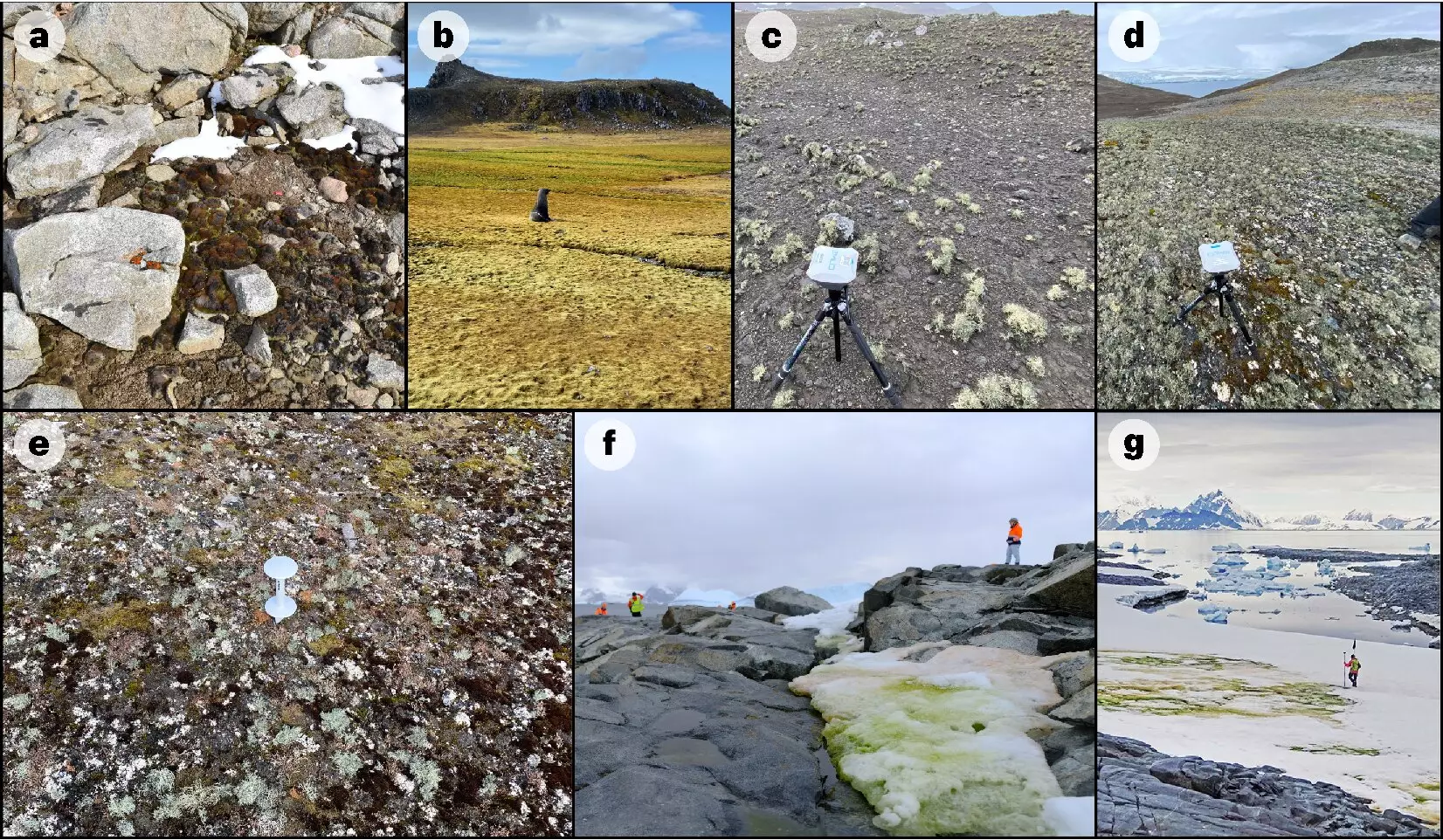Recent advances in ecological research have unveiled groundbreaking findings regarding plant life across Antarctica. For the first time, a comprehensive continent-wide mapping study has shed light on the expansive yet little-known vegetation thriving in this frigid environment. This research not only highlights the resilience of life in extreme conditions but also holds significant implications for conservation efforts in the face of climate change. Published in Nature Geoscience, the study utilizes satellite technology to map the distribution of mosses, lichens, and algae, laying the groundwork for future ecological monitoring and preservation strategies.
In a pioneering effort, researchers harnessed the capabilities of a European Space Agency satellite to conduct an extensive survey of Antarctic plant life. By integrating satellite data with field measurements collected over multiple summer periods, the team identified approximately 45 square kilometers of vegetation—an area comparable to three times the size of Lake Windermere in the U.K.’s Lake District. This satellite-driven methodology represents a significant innovation in ecological monitoring, offering scientists a low-impact means of assessing vegetation in one of Earth’s most remote habitats.
The findings indicate that a staggering 80% of the identified vegetation is concentrated in the Antarctic Peninsula and its adjacent islands, emphasizing the localized nature of plant life in this icy continent. The research indicates that this growth constitutes merely 0.12% of Antarctica’s total ice-free area, revealing the critical need for targeted monitoring of these relatively small yet vital regions. The data collected could inform existing environmental policies, particularly the Antarctic Specially Protected Area (ASPA) framework, which experts argue inadequately safeguards areas with substantial vegetation.
Antarctica’s flora, primarily composed of mosses and lichens, has adapted remarkably to thriving under the continent’s extreme conditions. These organisms play a crucial role in local carbon and nutrient cycling, making them essential components of Antarctica’s fragile ecosystem. Understanding the spatial distribution and abundance of these species enriches our knowledge of their ecological roles and resilience. Given that previous studies have established a connection between environmental sensitivity and these vegetative species, they serve as excellent indicators of regional climate change.
The Antarctic region stands out as a minimally disturbed landscape, making it a valuable natural laboratory for scientists studying the effects of climate change. The monitoring of plant species here offers potential insights into how similar vegetation types in other fragile ecosystems—such as the Arctic—may react to climate variations. This has profound implications for global conservation strategies, as identifying early signals of change in Antarctica can provide a clearer understanding of Earth’s interconnected ecological health.
The researchers, led by the University of Edinburgh in collaboration with significant international partners, express optimism about the future of Antarctic conservation. “Our continent-scale map provides critical information on vegetation presence in areas that are rarely visited by people,” states Charlotte Walshaw, a key member of the team. The new data not only enhances our understanding of the distribution of Antarctic vegetation but can also shape future conservation measures aimed at protecting these resilient life forms.
Dr. Claudia Colesie emphasizes the need for ongoing efforts, saying, “Knowing where to find these resilient organisms allows us to implement more targeted conservation measures crucial for safeguarding their future.” As Antarctica faces increasing pressures from climate change, remote sensing remains a vital tool for monitoring the health of its ecosystems while minimizing human impact.
The recent mapping study has unveiled previously uncharted areas of vegetation in Antarctica, providing a critical baseline for understanding how these hardy organisms respond to climate change. By blending satellite technology with field research, scientists are better equipped to assess and protect the delicate balance of life in one of the planet’s most extreme environments. As we stand at the crossroads of conservation and climate action, the insights from this research could help inform strategies that not only preserve Antarctica’s unique ecosystems but also contribute to global efforts to mitigate climate change.


Leave a Reply